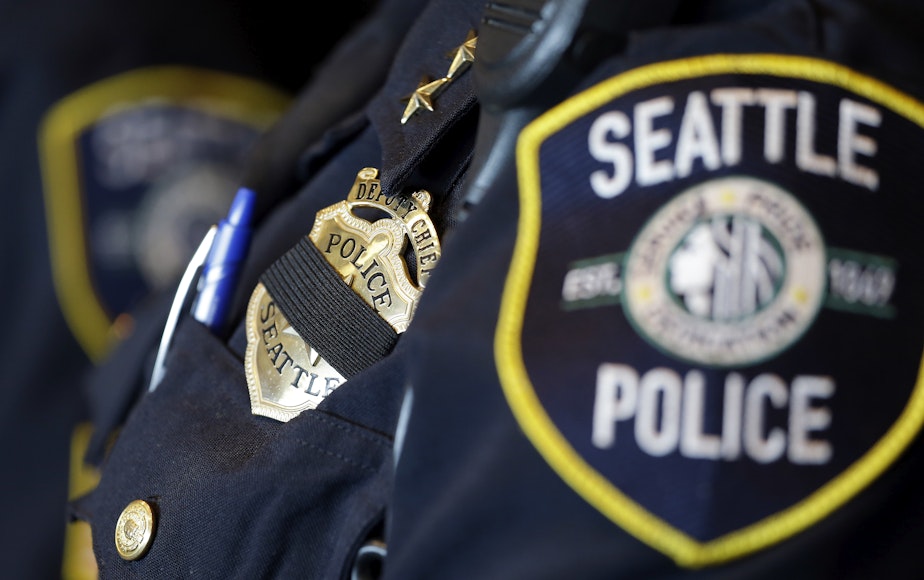Seattle Police lost 23 guns and doesn’t know where they went

The Office of the Washington State Auditor is looking into the loss of 23 firearms after Seattle Police reported them missing in August, Seattle Police confirmed on Thursday. The guns haven’t been accounted for since 2017.
This discovery, made after an internal accounting of missing weapons, comes amid a longtime push by city leadership to address gun violence and rid Seattle streets of stolen firearms. Former Mayor Jenny Durkan passed local legislation in 2018 requiring that residents lock up their guns to keep them out of the hands of children and criminals.
It also highlights the department’s struggle in keeping their weapons secure. A separate inquiry found vulnerabilities with firearm storage after a teenager walked out with a gun in 2019.
Patrick Michaud, spokesperson for Seattle Police, said it’s uncommon for guns to go missing.
“We’re going to do our best to ensure that we do better,” Michaud said. “Until we find them, we’re going to keep looking for them.”
Sponsored
The missing guns include:
- 18 Glock pistol lower frames from the training unit.
- A modified shotgun incapable of firing bullets from the training unit.
- A lower of a Glock 22 from the police range.
- A woodstock shotgun from either the range or from the quartermaster.
- A pistol and a rifle from the locker of an officer who returned from military leave to find them gone.
Although a gun contains several pieces, the only part that is legally considered a “firearm” is the lower portion — the frame or lower receiver which includes the grip and houses the trigger. Buying this part, or a full firearm, requires a background check in Washington state. But the top portion, or slide, of the gun can be bought online without restrictions.
Since police discovered the weapons were missing, their serial numbers have been entered into the National Crime Information Center, and if the guns turn up elsewhere, Seattle Police will be notified.
Michaud wrote by email that the department has since changed its audit schedule to require a quarterly audit of firearms and are researching additional technology options that can automate “the tracking of these sensitive items.”
Sponsored
“Could be a QR code, could be a sticker of some sort, could be something else entirely,” Michaud said.
The Office of the Washington State Auditor declined to comment for this story, because their review of a formal loss report submitted by Seattle Police remains ongoing.
This isn’t the first time the department has lost a gun. In October 2019, an 18-year-old walked out of a training building with a police officer’s personal firearm. The teenager, who attended a police education program for youth, ultimately threw the stolen weapon from his vehicle off a bridge. Police later recovered it from on top of a building three days later.
A Seattle Office of Inspector General internal review, requested by former Police Chief Carmen Best, found that firearm storage options at police training facilities had physical vulnerabilities, according to the investigation findings published in August 2021.
In one annex, firearms were stored in a metal cabinet “designed to store office supplies” with plastic bins and numbered trays. The cabinet was meant to be secured with a padlock during training, and the key kept by a safety officer.
Sponsored
In the second annex, firearms were stored in a single room that contained individual lockers. In this case, it was the outer door that was intended to be secured by a padlock during training.
The investigation report pointed out that the training storage system failed to meet requirements that applied to civilian gun owners at the time.
The investigation also found that a year after the stolen gun incident, police leaders still failed to secure the annexes. Receipts showed the assistant chief of the collaborative police bureau at the time purchased 20 padlocks — sold in four-packs with similar keys — to secure the firearms in the second annex. Investigators said that the purchased locks weren’t being used in 2020.
Michaud said that police have since limited the number of access points into both training annexes, and officers now have access to individual lockers with combination locks.




